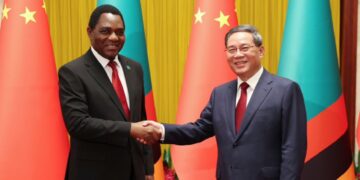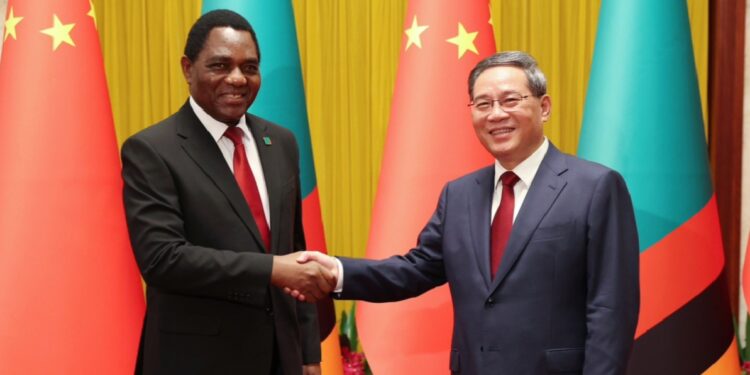By Enyichukwu Enemanna
China on Thursday signed a $1.4 billion agreement with Zambia and Tanzania to upscale infrastructure, aiming to facilitate trade from the resource-rich African countries.
The deal was signed during a visit of Chinese Premier Li Qiang to Zambia, the first of such visit in 28 years. It came at a time when Africa’s second largest copper producer is emerging from a financial crisis.
The deal is targeting the modernisation of the TAZARA railway linking landlocked Zambia to the Indian Ocean.
The railway facility, also financed by China in the 1970s for the purpose of facilitating copper exports and fuel imports through Tanzania, is still a vital trade route.
The project is largely seen as an effort to counter the U.S. and EU-backed Lobito Corridor, a route from Angola through Zambia to the Democratic Republic of Congo.
“We want to work with Zambia to advance the cause of modernisation,” Li said during talks with Zambian President Hakainde Hichilema ahead of the signing.
A representative of China Railway Corporation said the works on the 1,860 km railway line will include the rehabilitation of stations, the track, tunnels, bridges and construction of other infrastructure along the corridor.
The rehabilitation work is expected to raise freight volumes on the line to 2.4 million tonnes annually from 100,000 tonnes it stands at the moment.
Li’s visit is part of a push to deepen China’s presence in the copper-rich country as Europe and the U.S. make efforts to be alternative benefactors now that Zambia’s $13.4 billion debt is on a more sustainable repayment plan.
Hichilema expressed gratitude for China’s role in Zambia’s debt restructuring process.
China is Zambia’s largest official creditor, owed $5.7 billion and keen to highlight countries that are model members of President Xi Jinping’s flagship Belt and Road infrastructure initiative.
On Monday, Zambia issued a licence to a joint venture with China’s Fujian Xiang Xin Corporation (FJXX) to build a $1.1 billion crude oil refinery and energy complex, underscoring China’s growing economic footprint in the country.

































